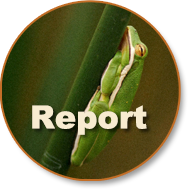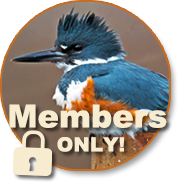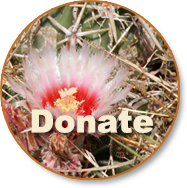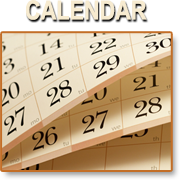This page will contain short summaries and links to plans the Mid-Coast Chapter is working on and general protocols for resource management projects or citizen-science data collection. If you know of plans or protocols that should be included on this page, please contact the MCTMN Project Director. Plans are working documents for a specific MCTMN project. Protocols are generally accepted best practices for carrying out an activity.
Plans
Bent Oaks Rookery Park Plan
Bent Oaks Rookery Park is a City of Rockport park whose live oak woodland supports a nesting colony (rookery) of over 100 herons and egrets from January-August. The rookery and the woodland are threatened by a variety of factors, both natural and human-caused. The live oak woodland is deteriorating, which can reduce available nesting habitat, and the rookery is susceptible to disruption. In response to these threats, a protection and restoration plan is proposed with the primary goals to:
- Improve protection of the rookery
- Restore and expand the live oak woodland
Partnering with the City of Rockport and the Texas A&M Forest Service, MCTMN has developed a plan to meet the project goals.
Monarch Milkweed Project
The project goal is to increase the quality and quantity of Monarch habitat in the Mid-Coast Chapter’s 8-county region. The project’s focus is twofold:
- to identify potential sites that are at least 100 square feet in size, can support a native milkweed population of at least 10 plants, have a good population of nectar plants, and are protected from disturbances such as mowing, weeding, human and pet traffic, insecticide applications, and nearby vehicular traffic.
- to recruit chapter members to collect native milkweed seeds or propagate plants for planting at the sites.
MCTMN Monarch Milkweed Project
Protocols
MCTMN eBird Protocols and Best Practices
Because State has instituted strict “Criteria for Earning Service Hours Entering Data into eBird” guidelines, MCTMN has created a new volunteer service opportunity—Mid-Coast Birding Survey project—to ensure our members’ eBird surveys are scientifically valuable and meet State criteria for birding and reporting as FR: Bird Populations.
Plant Rescue Protocols
Native plant rescue is a great opportunity to save native plants from destruction, but this activity can also involve risks. The Indiana Native Plants Society has developed these guidelines to ensure that rescues are done in a legal, ethical, and successful way.
Island Rookery Protocols
David Newstead, Director of Coastal Bend Bays & Estuaries Program’s Coastal Bird Program—provided guidelines for working with CBBEP:
CBBEP works with other organizations to develop a management plan every year that covers all the important islands in the bays in our area. Some activities we do every year, but we also have some long-term goals for many of the islands, which means certain steps are taken incrementally to build toward a later successional goal. We can’t really “outsource” this work to volunteers, because of the long-term nature of it and issues relating to the ownership/management status, but we can certainly use help with short-term activities at times.
The nesting season—posted on the signs in the bay—is February through August, but some species start earlier than that, and some may go a little later. Some islands won’t get started until late April or so, but we had to have a “one-size-fits-most” recommendation and that’s what was settled on.
We ask people to stay 50 yards away from nesting islands during the nesting season, but “disturbance” can result at even greater distances. Usually, the birds will let you know if you’re too close, but we don’t want it to come to that, since expending that energy to warn us is a waste of their resources, and might be leaving eggs or chicks exposed and vulnerable to heat stress or predation.
Part of CBBEP’s long-term plan is adding plants to some of the islands to eventually be used for nest-building. Growing plants and planting them are ideal opportunities to collaborate with Texas Master Naturalists, from the nursery phase to getting them in the ground and onward from there.
David Newstead
Director, Coastal Bird Program
Coastal Bend Bays & Estuaries Program
361.336.0312 ~ dnewstead@cbbep.org
Mailing: PO Box 23025, Corpus Christi, TX 78403-3025
Physical: 1305 N Shoreline Blvd, Ste 205 Corpus Christi, TX 78401




